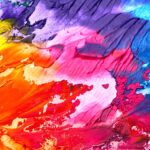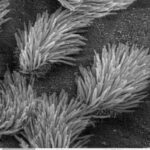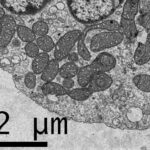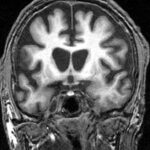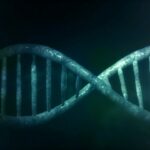SÍNDROME DE TREACHER-COLLINS
- Dauwerse, J. G., Dixon, J., Seland, S., Ruivenkamp, C. A. L., van Haeringen, A., Hoefsloot, L. H., Peters, D. J. M., Clement-de Boers, A., Daumer-Haas, C., Maiwald, R., Zweier, C., Kerr, B., Cobo, A. M., Toral, J. F., Hoogeboom, A. J. M., Lohmann, D. R., Hehr, U., Dixon, M. J., Breuning, M. H., Wieczorek, D. Mutations in gene encoding subunits of RNA polymerases I and III cause Treacher Collins syndrome. Nature Genet. 43: 20-22, 2011. DOI: https://doi.org/10.1038/ng.724
- Duan, X., Kelsen, S. G., Clarkson, A. B., Ji, R., and Merali, S. (2010). SILAC analysis of oxidative stress-mediated proteins in human pneumocytes: new role for treacle. Proteomics 10, 2165–2174. DOI: https://doi.org/10.1002/pmic.201000020
- Fitriasari, S., & Trainor, P. A. (2021). Diabetes, oxidative stress, and DNA damage modulate cranial neural crest cell development and the phenotype variability of craniofacial disorders. Frontiers in Cell and Developmental Biology, 1226. DOI: https://doi.org/10.3389/fcell.2021.644410
- Lodovichi, F. F., Oliveira, J. P., Denadai, R., Raposo-Amaral, C. A., Ghizoni, E., & Raposo-Amaral, C. E. (2018). Does an ear deformity bring an adverse impact on quality of life of Treacher Collins syndrome individuals?. Ciência & Saúde Coletiva, 23, 4311-4318.
DOI: https://doi.org/10.1590/1413-812320182312.21142016 - Sanchez, E., Laplace-Builhe, B., Mau-Them, F. T., Richard, E., Goldenberg, A., Toler, T. L., Guignard, T., Gatinois, V., Vincent, M., Blanchet, C., Boland, A., Bihoreau, M. T., and 16 others. POLR1B and neural crest cell anomalies in Treacher Collins syndrome type 4. Genet. Med. 22: 547-556, 2020. DOI: https://doi.org/10.1038/s41436-019-0669-9
- Schaefer, E., Collet, C., Genevieve, D., Vincent, M., Lohmann, D. R., Sanchez, E., Bolender, C., Eliot, M.-M., Nurnberg, G., Passos-Bueno, M.-R., Wieczorek, D., Van Maldergem, L., Doray, B. Autosomal recessive POLR1D mutation with decrease of TCOF1 mRNA is responsible for Treacher Collins syndrome. Genet. Med. 16: 720-724, 2014. DOI: https://doi.org/10.1038/gim.2014.12
- Splendore, A., Silva, E. O., Alonso, L. G., Richieri-Costa, A., Alonso, N., Rosa, A., Carakushanky, G., Cavalcanti, D. P., Brunoni, D., Passos-Bueno, M. R. High mutation detection rate in TCOF1 among Treacher Collins syndrome patients reveals clustering of mutations and 16 novel pathogenic changes. Hum. Mutat. 16: 315-322, 2000.
DOI: https://doi.org/10.1002/1098-1004(200010)16:4%3C315::aid-humu4%3E3.0.co;2-h - Vincent, M., Genevieve, D., Ostertag, A., Marlin, S., Lacombe, D., Martin-Coignard, D., Coubes, C., David, A., Lyonnet, S., Vilain, C., Dieux-Coeslier, A., Manouvrier, S., and 44 others. Treacher Collins syndrome: a clinical and molecular study based on a large series of patients. Genet. Med. 18: 49-56, 2016. Note: Erratum: Genet. Med. 17: 686 only, 2015. DOI: https://doi.org/10.1038/gim.2015.29
- Wise, C. A., Chiang, L. C., Paznekas, W. A., Sharma, M., Musy, M. M., Ashley, J. A., Lovett, M., Jabs, E. W. TCOF1 gene encodes a putative nucleolar phosphoprotein that exhibits mutations in Treacher Collins syndrome throughout its coding region. Proc. Nat. Acad. Sci. 94: 3110-3115, 1997. DOI: https://doi.org/10.1073/pnas.94.7.3110
- Yao, Y., Yamamoto, K, Nishi, Y., Nogi, Y., Muramatsu, M. Mouse RNA polymerase I 16-kDa subunit able to associate with 40-kDa subunit is a homolog of yeast AC19 subunit of RNA polymerases I and III. J. Biol. Chem. 271: 32881-32885, 1996.
DOI: https://doi.org/10.1074/jbc.271.51.32881
SÍNDROME DE WILLIAMS
- Kosel BA, Barak B, Kim CA, Mervis CB, Osborne LR, Porter M, Pober, B. Williams syndrome. Nat Rev Dis Primers 7, 42 (2021). https://doi.org/10.1038/s41572-021-00276-z
- https://sindromewilliams.org/
SÍNDROME DE BARDET-BIEDL
En caso de tener mayor interés en esta rara pero curiosa enfermedad, recomiendo la lectura de los siguientes artículos científicos:
- Forsythe, E. & Beales, P., 2013. Bardet-Biedl syndrome. European Journal of Human Genetics, Volumen 21, pp. 8-13.
- OMIM, 2023. BARDET-BIEDL SYNDROME. [En línea] Disponible en: https://www.omim.org/entry/209900?search=BARDET-BIEDL%20SYNDROME&highlight=%22bardet%7Cbiedl%22%20%28bardetbiedl%7C%20%28syndrome%7Csyndromic%29%20%29
La fábrica de energía celular y su implicación en enfermedades raras.
- Luo S., Valencia C. A., Zhang J., Lee N., et al. Biparental Inheritance of Mitochondrial DNA in Humans. 115, 51, 13039 (2018).
- Dard L., Blanchard W., Hubert C., Lacombe D., Rossignol R. Mitochondrial functions and rare diseases. Molecular Aspects of Medicine. 71,100842 (2020).
Enfermedad de Huntington
- Boycott, K. M., Vanstone, M. R., Bulman, D. E., & MacKenzie, A. E. (2013). Rare-disease genetics in the era of next-generation sequencing: discovery to translation. Nature Reviews Genetics, 14(10), 681-691.
- Burke Emily (12 de abril de 2020). Hope on the horizon for Huntington’s. [biotechPrimer]. Recuperado de: https://weekly.biotechprimer.com/on-the-hunt/
- Calabresi, P., Picconi, B., Tozzi, A., Ghiglieri, V., & Di Filippo, M. (2014). Direct and indirect pathways of basal ganglia: a critical reappraisal. Nature neuroscience, 17(8), 1022-1030.
- Carreres, M. A., Falguera, N. T., & Figuera, R. G. (2004). Enfermedades neurodegenerativas. Rehabilitación, 38(6), 318-324.
- Dash, D., & Mestre, T. A. (2020). Therapeutic update on Huntington’s disease: Symptomatic treatments and emerging disease-modifying therapies. Neurotherapeutics, 1-15.
- Dickey, A. S., & La Spada, A. R. (2018). Therapy development in Huntington disease: from current strategies to emerging opportunities. American Journal of Medical Genetics Part A, 176(4), 842-861.
- Lafuente Torralba, J. (2019). Un enfermedad rara, la enfermedad de Huntington, Vivir con Ella, Un paseo por la vida (pp. 16-17). Letrame, Grupo Editorial.
Dos casos particulares: el fármaco que enferma y la enfermedad que cura.
- McDermott DH, et al. Chromothriptic Cure of WHIM Syndrome. Cell. 2015 Feb 4. pii: S0092-8674(15)00016-1. doi: 10.1016/j.cell.2015.01.014
- Recursos electrónicos:
- ‘Chromosome shattering’: Understanding chromothripsis in human cancer (medicalxpress.com)
- Uno de los niños de esta fotografía fue vacunado contra la viruela – Foto del día – Eulixe
- https://www.smithsonianmag.com/smart-news/thalidomide-manufacturer-finally-apologizes-for-birth-defects-survivors-say-its-not-enough-24085623/
- https://www.elespanol.com/reportajes/20210404/medico-murcia-recetaba-talidomida-nauseas-nacio-sin/570943401_0.html
- Un fenómeno catastrófico en una célula provoca la remisión del síndrome de WHIM en una paciente – Genotipia

